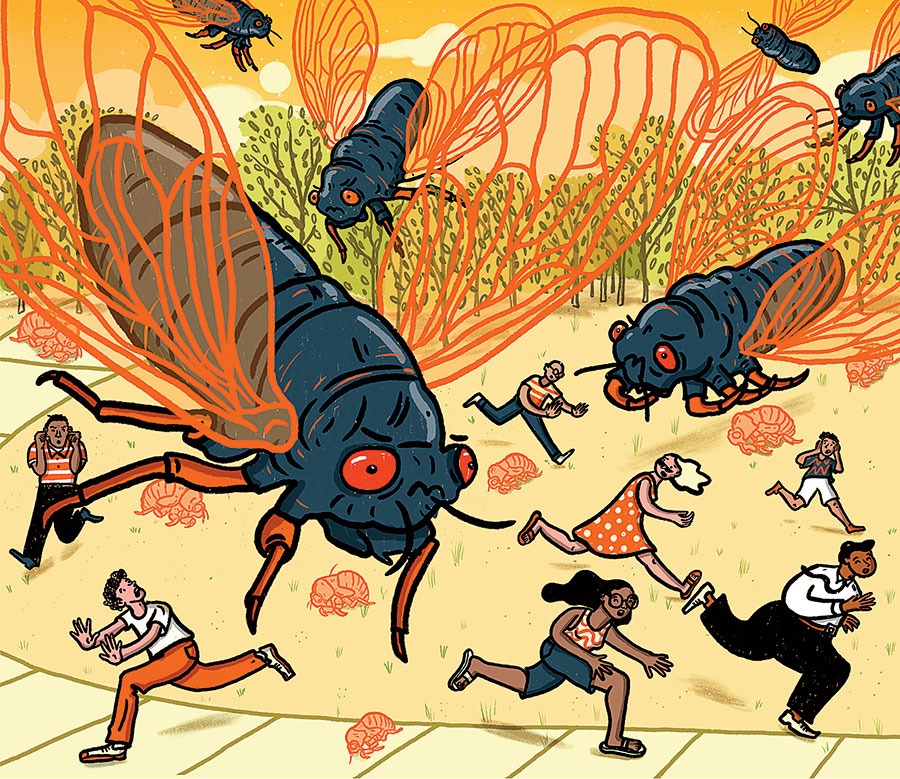Illinois is about to be swimming in cicadas, both alive and dead. This May, the Northern Illinois Brood and the Great Southern Brood will emerge from the soil simultaneously, overlapping in central Illinois. That means the Prairie State is about to be blanketed in billions of cicadas. Yes, billions.
The Math
In addition to the cicadas that show up each year, these two large broods of periodic cicadas — one with a lifespan of 17 years; the other, 13 — emerge simultaneously only once every 221 years or so. (Sometimes cicadas miss their cue. Can you really blame them? They’re insects.) The last time was 1803, the same year Fort Dearborn was constructed on the Lake Michigan shore. So it’d be kind of darkly poetic if the 2024 cicadas leave the city of Chicago smoldering in their wake, right?
A Bug’s Life
Cicadas spend the vast majority of their lives underground, sucking sap from tree roots, generally living their little cicada lives. But then, after 13 or 17 years, in the case of these particular broods, things get crazy when the soil reaches around 64 degrees. The cicadas crawl out for a rumspringa of sorts. Yes, once they hit the sunlight, it’s all about making sweet, sweet bug love. They spend the next four to six weeks mating and laying eggs. Then, having accomplished all that cicada life has to offer, they die.
What to Expect
Screaming: Cicadas are loud — they can reach the decibels of a lawn mower or a passing jet. And yeah, it’s only the male cicadas making a ruckus, using structures called tymbals on their abdomens. Turns out that the boys are “singing” (a generous description from cicada experts) to woo their female counterparts.
Creepy-crawlies: You know how usually you can hear cicadas but don’t see them? That won’t be the case this spring. Especially if you’re in the burbs or a forest preserve. We’re talking about roughly 1.5 million cicadas per acre here. They can’t all stay low-key.
Carcasses: After the cicadas pass on to cicada heaven, presumably a very crowded place, they will leave billions of carcasses. Get your snow shovel ready.
Stench: While they are good for the soil, the decaying bug carcasses will smell like … well, like decaying bug carcasses. I’m so sorry.
How to Prepare
Let’s be clear: Cicadas don’t bite, they don’t sting, they don’t carry diseases. Sure, they’re inchlong insects with red eyes and orange-veined wings who scream and leave their dead bodies to rot on the sidewalk. But come on! They’re harmless, really. Unless, that is, you have young trees. Female cicadas lay their eggs on trees, and the eggs can harm new growth. As a preventive measure, lightly wrap the branches in cheesecloth. Don’t bother with pesticides; they don’t work on cicadas. Other than that, simply take solace in this truth: By the next Cicadapocalypse, we’ll all be dead.



